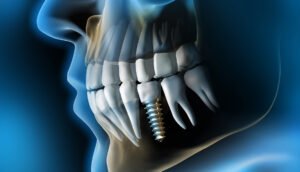Introduction
The field of medical implants has seen transformative advancements over the past few decades. One of the critical driving forces behind these innovations is the application of polymers. Polymers, with their versatile properties and adaptability, have revolutionized the design and functionality of medical implants. From improving biocompatibility to enhancing mechanical properties, polymers applications in medical implants have opened new horizons in medical science. In this blog post, we will delve into the various benefits of polymers applications in medical implants, exploring how they have reshaped patient care and outcomes.

Understanding Polymers in Medical Implants
1. The Basics of Polymers and Their Properties
Polymers are large molecules composed of repeating structural units called monomers. These macromolecules can be natural, like proteins and DNA, or synthetic, such as plastics. The diversity in polymer structures allows for a wide range of physical and chemical properties, making them suitable for various applications, including medical implants.
Biocompatibility
One of the most significant advantages of polymers in medical implants is their biocompatibility. Biocompatibility refers to the ability of a material to perform with an appropriate host response when applied as intended. Polymers can be engineered to be highly biocompatible, reducing the risk of adverse reactions in the body.
Mechanical Properties
Polymers offer a range of mechanical properties that can be tailored to match the requirements of different medical implants. This includes flexibility, strength, and elasticity, which are crucial for implants that must endure various stresses within the body.
Degradability
Certain polymers are designed to degrade over time within the body. This degradability is particularly useful in temporary implants, such as sutures or drug delivery systems, which are intended to dissolve after fulfilling their purpose.
2. Applications of Polymers in Different Types of Medical Implants
Cardiovascular Implants
Polymers are extensively used in cardiovascular implants, including stents, heart valves, and vascular grafts. These implants benefit from the flexibility and biocompatibility of polymers, ensuring they can integrate seamlessly with the body’s tissues and reduce the risk of complications.
Orthopedic Implants
In orthopedics, polymers are used in joint replacements, bone screws, and spinal implants. The mechanical properties of polymers, such as their strength and lightweight nature, make them ideal for supporting and replacing damaged bones and joints.
Dental Implants
Dental implants also leverage the benefits of polymers. They are used in crowns, bridges, and dentures due to their aesthetic properties and the ability to mimic the natural look and feel of teeth.
Advantages of Polymers Applications in Medical Implants
1. Customization and Design Flexibility
Polymers offer unparalleled customization and design flexibility for medical implants. This adaptability allows for the creation of patient-specific implants tailored to individual anatomical and physiological needs. Advanced manufacturing techniques, such as 3D printing, have further enhanced this capability, enabling precise and complex designs that were previously impossible.
2. Improved Patient Outcomes
Polymers applications in medical implants have significantly improved patient outcomes. The biocompatibility and mechanical properties of polymers reduce the risk of implant rejection and failure, leading to better long-term results. Additionally, the lightweight nature of polymers ensures that implants are more comfortable for patients, enhancing their quality of life.
3. Minimally Invasive Procedures
The use of polymers has also facilitated the development of minimally invasive surgical procedures. Polymers can be molded into shapes that allow for easier insertion and positioning within the body, reducing the need for large incisions and extensive surgery. This results in faster recovery times and less post-operative pain for patients.
4. Cost-Effectiveness
Polymers are generally more cost-effective than traditional materials like metals and ceramics. Their lower cost, combined with their versatility, makes them an attractive option for a wide range of medical implants. This cost-effectiveness can lead to broader accessibility and affordability of advanced medical treatments for patients worldwide.
Challenges and Future Directions
1. Addressing Biocompatibility Issues
Despite their many benefits, polymers are not without challenges. One of the primary concerns is ensuring long-term biocompatibility. While many polymers are designed to be biocompatible, ongoing research is necessary to understand their interactions with the human body over extended periods.
2. Enhancing Mechanical Properties
Another area of focus is enhancing the mechanical properties of polymers to ensure they can withstand the stresses and strains of the body over time. This involves developing new polymer blends and composites that offer superior strength and durability.
3. Innovations in Degradable Polymers
Research is also ongoing in the development of degradable polymers for temporary implants. These materials must degrade at a controlled rate, ensuring they fulfill their function before being safely absorbed by the body.
4. Regulatory and Safety Considerations
As with any medical technology, regulatory and safety considerations are paramount. Ensuring that new polymers meet stringent safety standards and receive regulatory approval is essential for their successful application in medical implants.
Conclusion
Polymers applications in medical implants have brought about a revolution in medical science, offering numerous benefits from customization and improved patient outcomes to cost-effectiveness and minimally invasive procedures. However, challenges remain, and ongoing research is crucial to address these issues and further enhance the capabilities of polymers in medical implants. As we continue to explore the potential of polymers, the future of medical implants looks promising, with the potential to transform patient care and treatment outcomes.
We hope this blog post has provided valuable insights into the benefits of polymers applications in medical implants. We invite you to share your thoughts, experiences, and questions in the comments section below. Your feedback is important to us and helps us create content that meets your needs and interests.






1 Comment
Pingback: How to Enhance and Maintain Polymers Functionality in Medical Implants - greenpolymershub.com